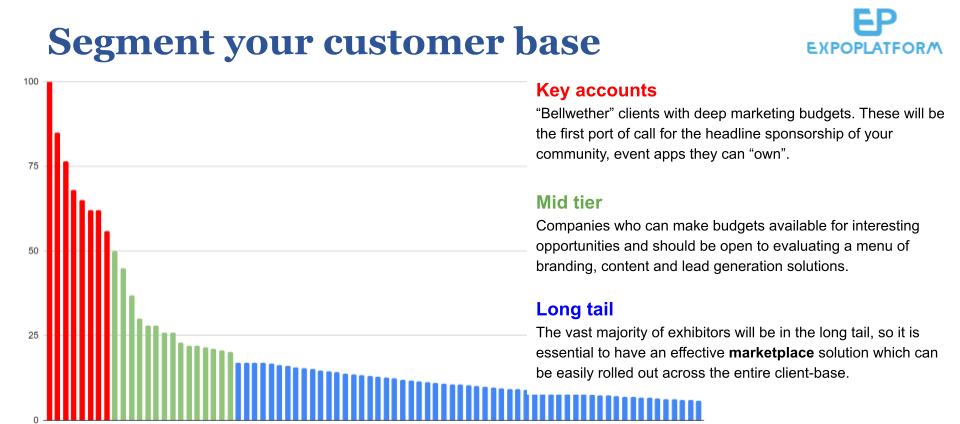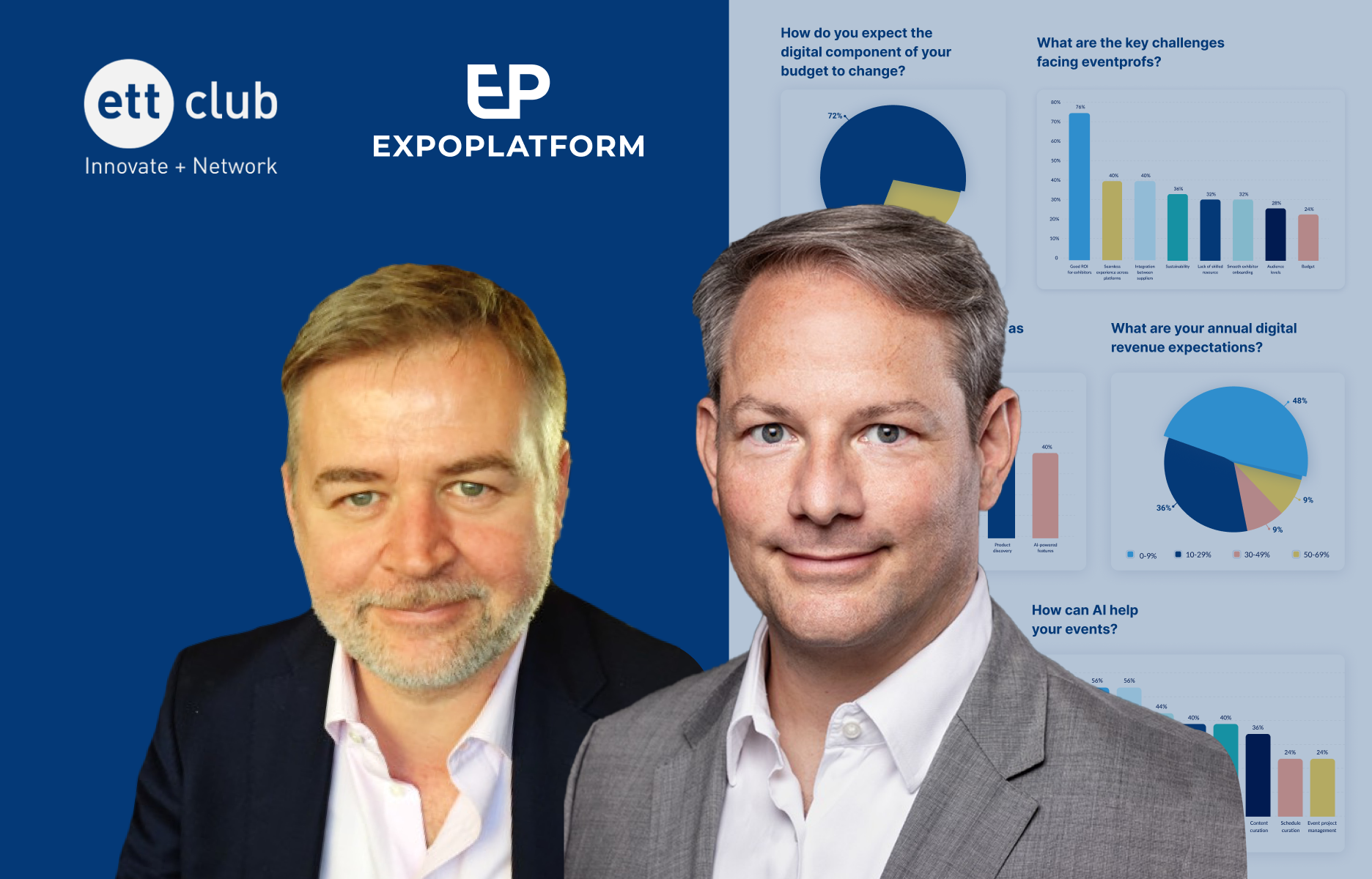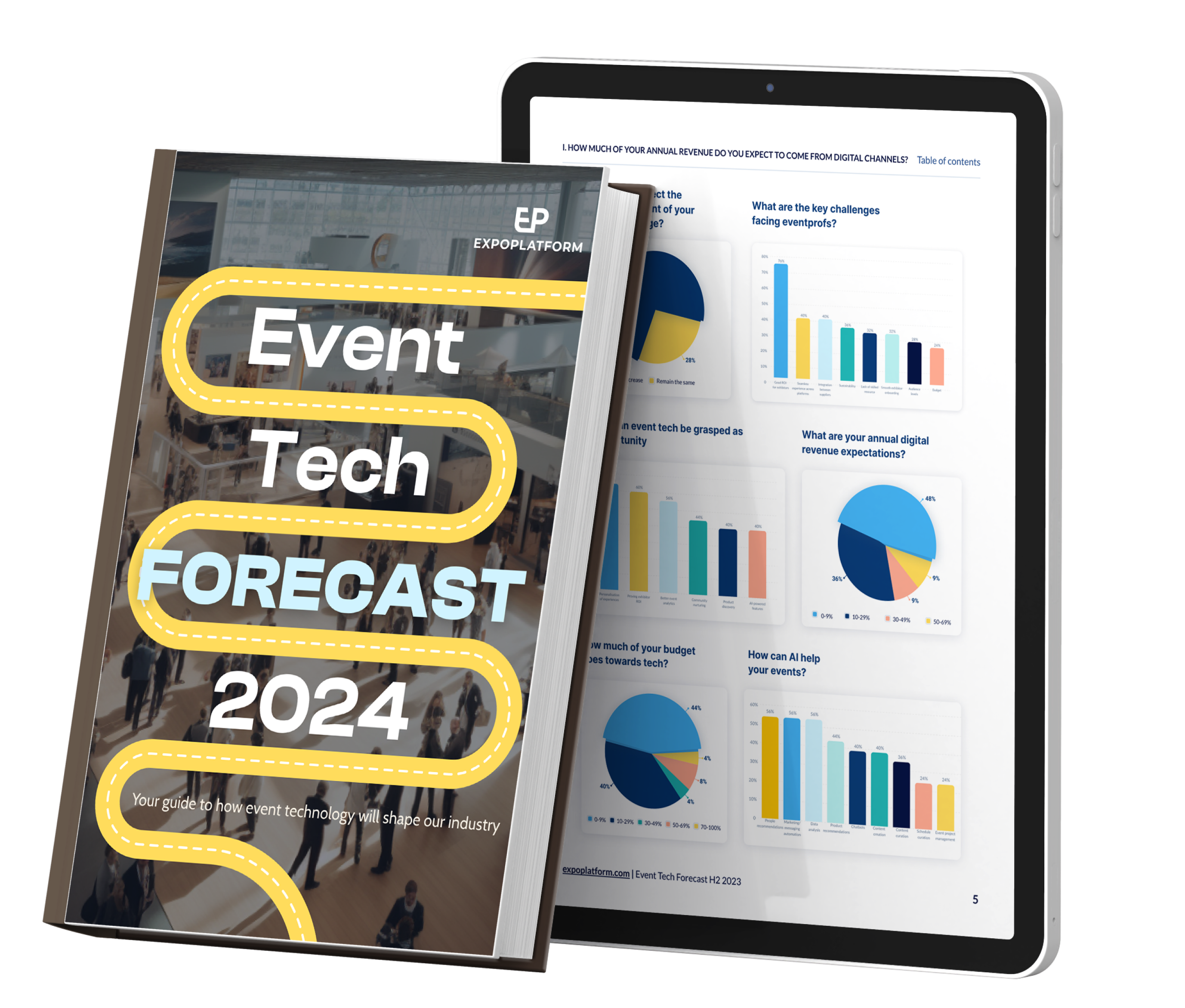
The Monetisation Blueprint digest: a brief for the busy event organiser
The Monetization Blueprint is ExpoPlatform’s practical guide on how an event organizer can navigate the massive shakeup to business models we have recently witnessed.
Our free ebook brings together exclusive insight from industry experts into how things have changed and how to shape up for the future, with instructions on how to increase income in this everchanging landscape.
It comes as digital revenue is now set to grow from being just 2% of an organizer’s budget to 25%, with lockdown restrictions having accelerated a change which was long overdue.
Missing these opportunities is not an option in today’s uncertain economy.
Here, we highlight some of the main topics covered in our complete guide to monetization in the event industry.
What has changed?
For the last two decades, digital advertising has steadily grown each year and in 2021 is estimated to be worth £333 billion ($455 billion USD).
This represents 61% of all advertising and is forecast to rise to 68% by 2024 – that is more than TV, print, cinema and outdoor combined.
Our industry was slow to embark on this digital transformation journey, but now necessity caused by lockdown restrictions has accelerated that change.
Exhibitor spending on pure tradeshow activities is predicted to decline, with them now anticipated to increase investment in digital content, hybrid events and training of their own teams.
Furthermore, transactions rapidly shifted online during the pandemic.
A total of 83% of B2B buyers told a McKinsey study they have found digital – either ecommerce or remote sales – to be equally or more effective than the traditional approach.
This research ran throughout the pandemic, showing how the comfort with losing face-to-face increased quickly as buyers became more comfortable with digital channels.
Meanwhile, the subscription economy has grown exponentially in the last decade.
Research from Zuora puts that surge at 435% over nine years – with the move in that direction looking like it will keep accelerating.
Customers now place more value on outcomes over ownership – with Netflix, Spotify and Amazon Prime all succeeding in this model.
This approach creates predictable, recurring revenue streams for businesses.
They can be used by exhibition organizers to have suppliers subscribe for a year of activity rather than a one-off event.
Organizers who don’t keep up with the evolution of business models risk being left behind.
What digital solutions are out there?
There are three main types of sponsored digital solutions: thought leadership, branding and lead generation services.
Virtual platforms can give an organizer a large amount of inventory before, during and after an event.
Here’s a rundown of some of the available options:
- Branding
- Online advertising
- Event sponsorships
- Mobile app sponsorship
- Community group sponsorship
- Podcast sponsorship
- Thought leadership
- Sponsored conference sessions
- Sponsored editorial
- Breakouts and workshops
- Lead generation
- Marketplace profiles
- Webinars
- Ebooks and whitepapers
- Push notifications
Organizers should package their inventory into a series of easy-to-buy bundles with pricing to reflect the value your customers will receive at each tier.
This is better than just presenting customers with a long list of options.
Our Monetization Blueprint provides an easy to apply basic breakdown of how to extend the lifecycle of an event – and to sell to different tiers of exhibitors.
Not all clients are equal – segment your base
A marketplace solution which can be rolled out across an entire client base is the first step in boosting digital revenue.
The “long tail” segment accounts for around 70% of customers and could raise virtual income to 25% – if handled properly.
This is made up of the clients with smaller buying power, but the volume makes up for that in the same way as “counting the pennies as the pounds watch after themselves”.

Major and mid-tier accounts can then be offered higher-value sponsorship of new products which have been developed.
Digital solutions have potential to appeal to a wider range of suppliers than those who currently exhibit at a physical event.
Organiser should sure to have competitively priced entry-level digital packages which are suitable for new prospects such as start-ups and international exhibitors.
The need for transparent ROI
Online platforms can give exhibitors a real-time dashboard of information about all customers who have engaged with their online company profile.
It also gives data about interactions with products and content published at a physical stand.
This is important as today’s marketers are used to using LinkedIN, Google and Facebook – platforms which all show real-time statistics.
The same is expected in the B2B world.
Brian Field, chief operating officer at Emerald, said: “Being able to use data and tools to produce clear mechanisms and metrics around ROI – that are going to be satisfying to a chief marketing officer who has many other channels to achieve success in their business – is required, we have to do it.”
Integrated mobile apps allow for lead scanning of badges – barcodes or QR codes – which is available for visitors and exhibitors, who can rate and categorize leads and add notes.
All leads captured can then be stored in an exhibitor’s dashboard, bringing together online and offline results together into a single view.
Adapting your sales team to the hybrid future
The digital transformation of events has given organizers room to rethink how they structure sales teams.
It has also raised concerns over whether the traditional event planner has “credibility” to handle this changing landscape.
There are now so many different channels for promoting content, engagement and marketplaces which can be handled in different ways.
The explosion of data has also landed organizers with a wealth of information they either do not have the talent of the time to make the most of.
Luke Bilton, ExpoPlatform’s chief growth officer, said: “The number one asset event organizers have is a large volume of high-quality data.
“Audiences an exhibitor wants to reach at the live event will be just as relevant online.
“This should give instant credibility – or at least a seat at the table – if the organizer can create a compelling offering.”
Two schools of thought exist about how to restructure teams to make the most of this new landscape: specialists or generalists.
However, after consulting with industry experts ExpoPlatform reached its own conclusion – probably a bit of both is best.
This would include a key account team trained and incentivized on selling everything, plus digital specialists ready to jump in and support as required.
Find out more in the Monetization Blueprint.
There's more you might like

What Europe’s AI Act could mean for eventprofs
The European Union is on the brink of introducing a world-first legal framework for AI, with potential consequences for event organizers. New legislation – the Artificial Intelligence Act – has been endorsed by MEPs with 523 votes in favour, 46 against and 49 abstentions. It is aimed at mitigating risks associated with AI while fostering ...

Events industry has ‘long way to go’ on personalisation
The events industry still has “a long way to go” to improve in-person experiences through AI-powered tools, according to an expert. Matthias Tesi Baur, founder of the ETT Club, was speaking on a webinar panel dedicated to latest findings from the Event Tech Forecast 2024. It found that personalisation of experiences was the biggest opportunity for ...

12 Event Tech-mas treats for a jolly 2024
‘Tis the season to be techie! As we gear up for the holiday season, it’s time to unwrap some festive event tech-mas treats that will make your 2024 merry and bright 🎁 Santa’s workshop might be filled with toys and gadgets, but our event tech-mas workshop is bursting with innovative ideas to level up your ...

